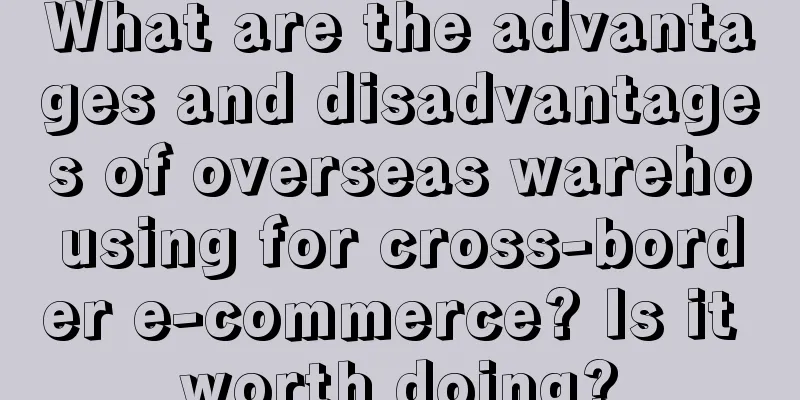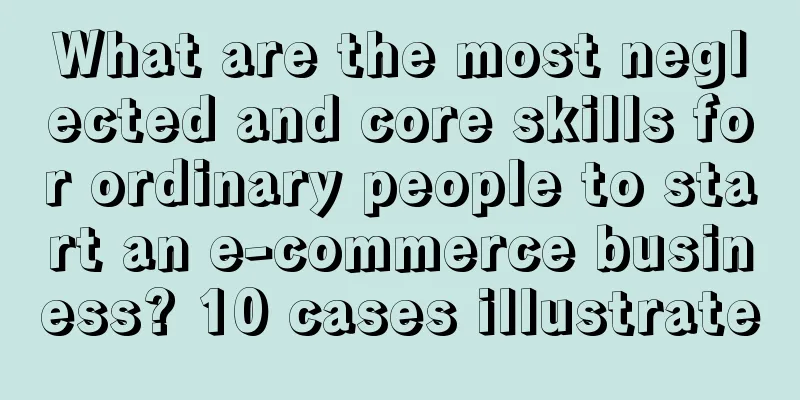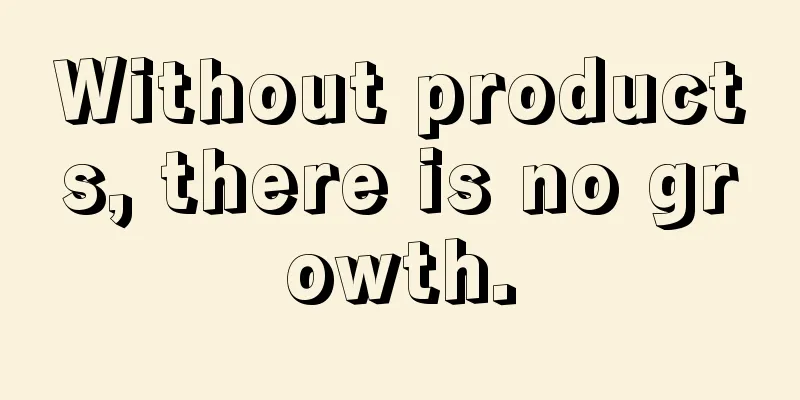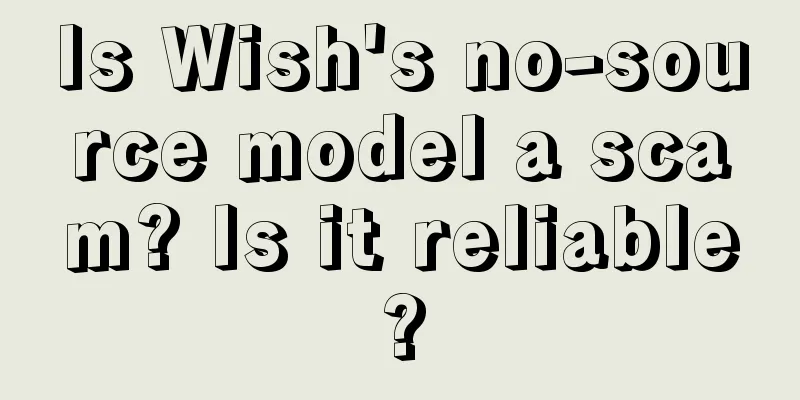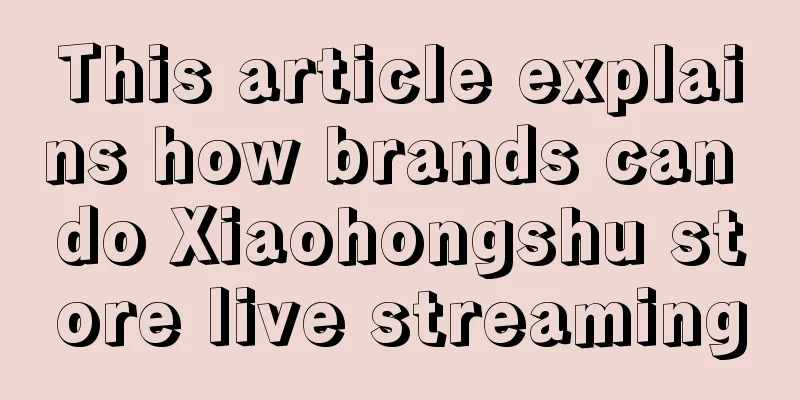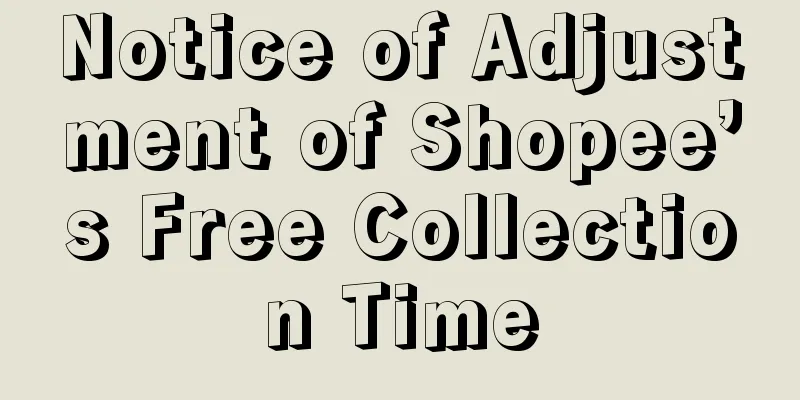5 ways to activate consumer needs
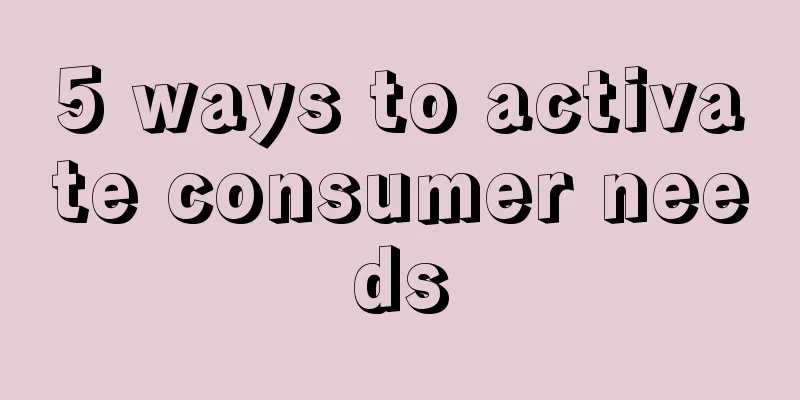
Our understanding of needs is far from enough. As the No. 1 brand, there is only one important job: discovering and describing needs. This means discovering, exploring, and mobilizing the target market and consumer needs. Only when they are describable, decomposable, and instructable can they be reached. Demand is the driving force of consumption. Real needs are different from fake needs, and positive needs are different from negative needs. As the No. 1 brand, how you understand and discover consumer needs determines how you meet them and how you do the market. Demand is a commonplace, but our understanding of demand is far from enough. 1. Requirements descriptionFor the brand leader, the basic skills are to understand and describe consumer needs. Insight is the basic skills, and description is the methodology. In other words, how to turn a demand concept into an action that can be implemented, worthwhile, and executable by an organization depends on the description of the demand. Demand = market. Discovering and satisfying demand is the basic job content of the brand’s No. 1 position. The purpose of clearly describing needs is to complete the consumer demand profile. Through demand description, provide basic judgment basis for products, prices, channels and promotions (marketing 4P). Describable, decomposable, and instructable: The demand description should be able to guide the work of product, price, channel, and promotion. If we use OKR to understand, demand is O, and product, price, channel, and promotion are KR. Demand description formula: what kind of product function and form can meet the needs of consumers in what specific scenarios. This provides key judgment basis for market research, product development, pricing, channels, and promotion. 2. Demand awakening
5 ways to awaken needs:
1. Unsatisfied stateThe state of being unsatisfied is a psychological norm. The nouveau riche mentality is the release of retaliatory consumption after long-term suppression of demand. When physiological needs are met, safety needs are met, social needs are met, social needs are met, self-esteem needs are met, and self-practice needs are met. This is called: when you are well fed and well clothed, you think about lust, and when you are poor and humble, you think about stealing. The top state of demand is desire. Marketing is about making people's demands to satisfy their desires reasonable. 2. Scene stimulationScenarios stimulate sales potential. Festivals are big scenes, and big scenes inspire big potential. The 5,000-year cultural history has left us with precious cultural scenes: New Year's Eve is the first, August 15th is the second, and Dragon Boat Festival is the third. When people enter a specific scene, they will be stimulated to have specific needs. Eating dumplings, moon cakes, and rice dumplings, you can't eat that feeling after that day. Double 11 is a man-made scene. On 11.11, if you don't buy something, you feel like you've suffered a great loss. In fact, you haven't suffered any loss. The scene atmosphere pushes you to buy, buy, and buy. People are the sum of social relations. Comparison effect + social theater effect give rise to needs and desires. Your sense of happiness has nothing to do with Jack Ma, but is most related to your friends. How can he drive a Mercedes-Benz? What is the reason for him to drive a Mercedes-Benz? This guy is better than me? First there is envy, then jealousy, and then hatred - change the car tomorrow. 3. Manufacturing and comparison effectPeople are the sum of social relations. Envy, jealousy and hatred continue to ferment regardless of the distance of the relations. Envy, jealousy and hatred reflect the structure, levels and origins of jealousy. Everyone has a yearning for a better life and career, and a feeling of envy. Those who are far away from it will stop there. Although they cannot achieve it physically, they yearn for it in their hearts. When they envy it to the point of why it is him and not me, it becomes jealousy. Sometimes you have no other intentions, but he is just jealous of you, jealous that you are rich, have a car, and have talent. In fact, these have nothing to do with him, but he just thinks that you "robbed" him of his things, his money, his car, and his talent. As the saying goes: Only when you learn to feel ashamed, you know that your art is not good enough. It is through the unspeakable emotion of jealousy that a person truly realizes his inferiority. This is a digression, so let's stop here for now. Creating a comparative effect is often used in competitive advertising, copywriting or publicity. condition: 1. Mature categories 2. During the process of continuous consumption, consumers have a clear perception and recognition of the attributes and characteristics of the product category. 3. The comparison anchor point is measurable, perceptible, and quantifiable. Anchor the comparison object: Select and anchor the comparison object based on the perceived differentiated advantages. Concrete comparatives: The comparatives should be measurable, perceptible, and quantifiable, such as features, qualities, functions, benefits, and effects. Create a sense of gap: The core of dramatic expression of creativity lies in creating a sense of gap, rather than creativity. Action instructions: result-oriented behavioral guidance, that is, the advertisement should have its own "hook" when it is designed. Anchoring the comparison object, concretizing the comparison object, and creating a sense of gap are all to prepare for the "hook". 4. Presentation, cognitive dissonanceCognitive dissonance: When the worldview, cognition, customs, and logic of the outside world conflict with existing cognition, imbalance and maladjustment will occur. By affecting cognition, it can bring about an "imbalanced" state, thereby inducing behavior. Cognitive and aesthetic needs are Maslow's later supplement to the hierarchy of needs theory. Interpretation and understanding phenomena accompany people throughout their lives. When individuals realize that there is a contradiction between their attitudes and behaviors, cognitive dissonance occurs. Festinger's insufficiently rationalized experiment: the subject was asked to do a boring winding job for 1 hour. When he left the studio, the experimenter asked him to tell the "subject" (actually the experimental assistant) waiting outside to participate in the experiment that the winding job was interesting and attractive. For this, the lying subject would receive a reward. Then the experimenter asked him to fill out a questionnaire to understand his true attitude towards the winding job. The results showed that the subjects who were paid more still had a low attitude towards the winding job; the subjects who were paid less, on the contrary, improved their evaluation of the winding job and began to like it - that is, people who were paid less liked the winding job more than those who were paid more. This situation is called attitude change caused by cognitive dissonance under insufficient rationalization conditions. That is: Normally, people's cognition and behavior tend to be consistent. The situation where cognition and behavior contradict each other is called cognitive dissonance. Cognitive dissonance occurs when an individual's cognition is opposed by the group, that is, when it is inconsistent with the majority of the group. Certain concepts, trends, attitudes, culture, and values in society can cause and create cognitive dissonance. When cognitive dissonance occurs, individuals either change their attitudes or their behaviors. Consumers are both the starting point and the end point of advertising. Advertising must complete the entire process from attracting attention, generating interest, stimulating desire, and promoting action. Lewis proposed the AIDMA theory: the five stages of consumers from exposure to information to the final purchase: attracting attention - stimulating interest - arousing desire - leaving memory - purchasing action. By presenting cognitive dissonance, the purpose of attracting attention and stimulating interest can be achieved. Four ways to attract attention by creating cognitive dissonance: Logical conflict: I won't accept any gifts this year, and if I do, I'll only accept Melatonin. . Never accept, but never receive, creating a logical conflict Conflict of cultural values: Steaming is better for nutrition. Conflict of cultural values in Western food, steaming vs. squeezing New and old experiences contradict each other: You have washed your hair all your life, but have you ever washed your scalp? Conflict of concepts: Cordyceps sinensis, now start eating it in your mouth 5. Create a theatrical effectThe dramatic effect of consumption: the symbolization of consumption, or symbolic consumption. The implicit information beyond the product transmitted through symbols is more or less the potential demand of consumers in the consumption process. Including: price information, cultural preferences, social class and many other information hidden behind the product and attached to the symbol. Huang Bo said in Crazy Stone: Brand, Baleno (turning a pretty good second-tier brand into a brand in the urban-rural junction). The more externalized a brand is, the more symbolic its consumption becomes. Expensive does not necessarily have to be justified, but it must be known to people. LV, Moutai, and Zhonghua cigarettes have made their expensiveness known to everyone, so people will naturally consume when it is time to consume. You don't need to teach consumers what drama is, and you don't need to explain why it's expensive. You play your part, and when it's time for them to perform, they have to pay to "invite" you to perform. For example, 8848 and Xiaoguan Tea are also like this. Everyone knows that they are expensive, and the rest is waiting for success. From this perspective, Mr. Du knows the truth. What he consistently markets is not demand but desire - the desire for consumption and "dramatic" display. What is advertising? It is a means to release audience’s desires and rationalize their desires. A master always attacks with high power. Making money from rich people requires high investment and slow progress, but it is highly efficient. If everyone knows that you are expensive, consumption will come naturally. Rolls-Royce sells only a few hundred units a year in China. If you follow the logic of Internet traffic and precise delivery, you can just deliver it to these few hundred people. In fact, it is not possible. If you want to sell to these few hundred people, you must let hundreds of millions of people know. When everyone in the world knows that you are expensive, customers will come to you on their own and consumers will come uninvited - this guy is rich and drives a Rolls, so you can't go wrong by following him. Price itself is a signal. In the context of consumer drama, only expensive products make the most sense - it brings the greatest efficiency in social interaction. I don't need to say anything to you, and I save a lot of self-introduction. Come and see what watch I wear and what car I drive. Do I need to waste more words? How efficient. Selling a product at a high price is itself a process of socializing the product and symbolizing consumption. From this perspective: Xiao Guan Tea is still sold at a low price. The more expensive it is, the better it sells. When giving gifts, are you afraid that others will know the price is high? You are afraid that the other party will not know it. The Law of Drama Effect:
Author: Houshan Keju, Source: WeChat public account "Lao Gao Business and Brand" |
>>: How does Costco, with an annual fee of 60 yuan, lock in hundreds of millions of members?
Recommend
Is it necessary to repeat Amazon keywords? What should I pay attention to when using Amazon keywords?
There is one course that Amazon merchants must lea...
Exploring the blue ocean of male emotional content in the “his economy”
This article analyzes the reasons why male emotion...
E-commerce “exam”, the answer sheets are “similar”?
This article analyzes the current situation of thi...
How to quickly break zero on Shopee? Tips to quickly break zero on Shopee
After merchants settle in an e-commerce platform, ...
Talking about brands from a story of a popular homestay in Sanya
This article explores the question of whether and ...
It’s so much fun to correct short essays on the food delivery app!
This article collects the comments from merchants ...
Coco Tree Coconut Juice Live Room: In the reversal of gaze, the reality dilemma that cannot be eliminated
This article starts from the "handsome live b...
Is it safe to shop on Shopee? What should I pay attention to?
Shopee is a well-known cross-border e-commerce pla...
How to “take advantage of crisis and turn crisis into opportunity” in crisis public relations from the BMW MINI incident
The BMW MINI incident was a hot topic. As a market...
How long does it usually take for Amazon Europe to conduct a KYC audit?
Sellers on Amazon Europe sometimes encounter KYC a...
The bloggers who left their jobs and couldn't squeeze through the single-plank bridge have collectively returned to work
Resigned bloggers have chosen to return to the wor...
E-commerce turning point! Taobao takes the lead in cracking down on unreasonable "refund only" policies
Recently, Taobao's adjustment to its "ref...
Wanglaoji launches Sichuan pepper flavor, curiosity becomes the new traffic code for the brand!
How do brands use their unique marketing tactics t...
Can the refund amount on Shopee be modified? How to modify it?
Now some sellers on Taobao and Tmall feel that the...
What should I do if I don’t have online store turnover when applying for Shopee? Can I open a store as an individual?
As a cross-border e-commerce platform, Shopee has ...
